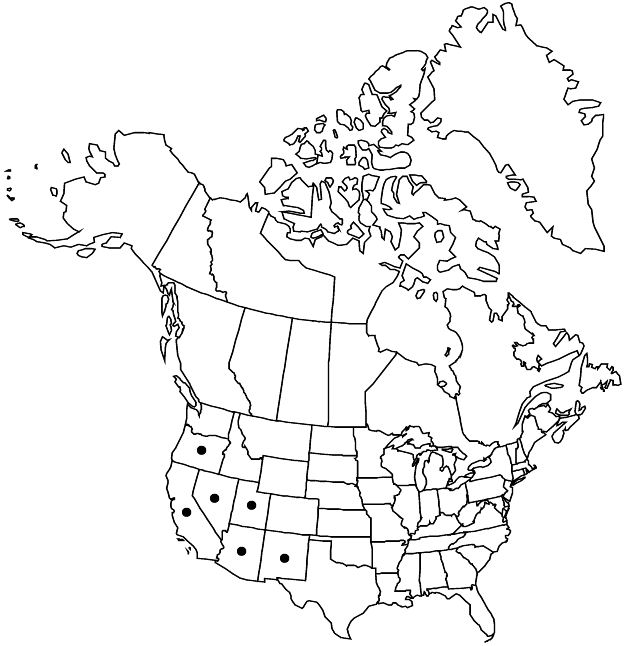Oxalis pilosa
Fl. N. Amer. 1: 212. 1838.
Herbs perennial, caulescent, rhizomes and stolons absent, bulbs absent. Aerial stems usually 2–8 from base, decumbent to ascending, 10–40 cm, becoming woody proximally, sparsely to densely pilose, hairs spreading irregularly to ± deflexed, nonseptate, longer hairs 0.6–1.2 mm. Leaves basal and cauline; stipules oblong, margins narrowly flanged, apical auricles absent; petiole (1–) 2–6 cm, hairs nonseptate; leaflets 3, glaucous and gray-green to yellowish green, obcordate, 5–12 mm, lobed 1/5–1/3 length, surfaces glabrous to loosely strigose to hirsute-villous, oxalate deposits absent. Inflorescences umbelliform cymes, 1–2 (–3) -flowered; peduncles 1.5–5 cm. Flowers semihomostylous or distylous, within level of leaves; sepal apices without tubercles, surfaces strigose to hirsute-strigose; petals yellow, rarely with red lines proximally, 8–12 mm. Capsules angular-cylindric, abruptly tapering to apex, 12–17 (–20) mm, strigose-hirsute. Seeds brown to blackish brown, transverse ridges rarely with whitish lines or spots.
Phenology: Flowering (Feb–)Mar–Jun(–Oct).
Habitat: Juniper-grasslands, pinyon-juniper, oak-juniper, oak, oak-pine, rocky and grassy hillsides, riparian woods (sycamore-walnut, cottonwood-willow), canyons, stream banks, washes, gravel bars.
Elevation: (700–)900–1900(–2000) m.
Distribution

Ariz., Calif., Nev., N.Mex., Oreg., Utah, Mexico (Baja California), Mexico (Chihuahua), Mexico (Coahuila), Mexico (Durango), Mexico (Nuevo León), Mexico (Sonora)
Discussion
Oxalis pilosa has been treated as an infraspecific entity within O. albicans, but the two are sympatric in the southwestern United States and although each is variable, there appear to be relatively few unequivocal intermediates. Reports of O. pilosa from Texas apparently were based on misidentifications of O. albicans and perhaps also of O. dillenii.
Selected References
None.
Lower Taxa
"alternating" is not a number."/5" is not declared as a valid unit of measurement for this property.